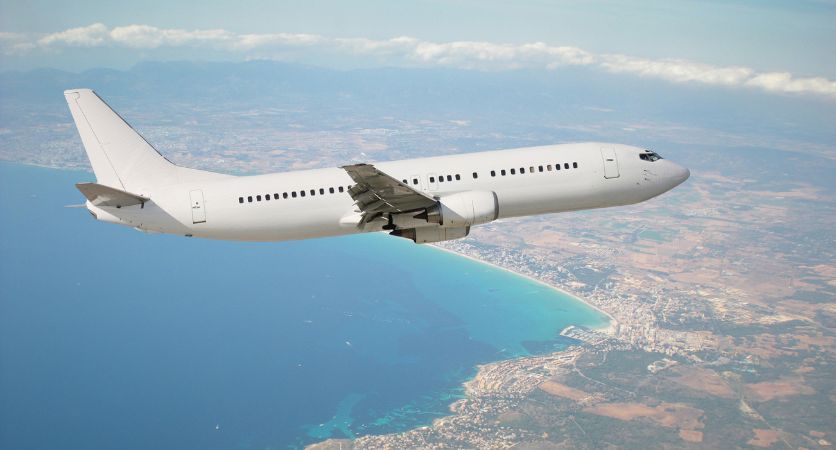Spain's Flight FR8163 Forces Emergency Return to Madrid After Gear Malfunction Strikes Over Northern Territory Ensuring Safe Landing for All Passengers - Travel And Tour World
Thursday, June 5, 2025

In a dramatic turn of events, Spain’s Flight FR8163 was forced to return to Madrid after experiencing a critical gear malfunction over northern Spain. The Boeing 737-800, initially bound for London Stansted, was an hour into its flight when the crew declared a general emergency following a fire warning in the aircraft’s gear well. With safety as the top priority, the aircraft turned back and made a successful emergency landing at Madrid–Barajas Airport, where emergency services were ready to assist. Fortunately, all passengers were safely disembarked, and the situation was handled with precision, allowing the flight to resume later with a replacement aircraft.
On a routine flight from Málaga to London, passengers aboard Flight FR8163, operated by a Boeing 737-800, experienced a nerve-wracking ordeal on June 5, 2025, when the flight was forced to return to Madrid following a critical technical issue. The flight, which was initially set to travel to London Stansted Airport, was only about an hour into its journey when the crew was alerted to a potential mechanical failure, triggering a swift and cautious emergency response.
The flight took off from Málaga Airport at 12:22 PM, with passengers expecting a smooth journey to their destination. However, shortly after reaching cruising altitude and while flying over northern Spain, the aircraft encountered a warning that led to an emergency situation. The flight crew, upon detecting an issue with the plane’s landing gear system, declared a general emergency by activating the emergency transponder code 7700.
According to Flight Emergency, a notable aviation information source on X (formerly Twitter), the flight deck reported a possible gear failure. Specifically, a fire warning in the aircraft’s gear well prompted the emergency protocol. With the safety of everyone on board as the utmost priority, the crew made the decision to turn the aircraft around and head back toward Madrid–Barajas Airport for an emergency landing.
The situation required immediate attention, and emergency services were placed on high alert as the aircraft made its way back to Madrid. Onboard, the cabin crew followed protocols to ensure the safety and comfort of the passengers during this stressful situation. Passengers were likely informed of the issue, and safety measures were reinforced to prepare for any eventualities.
As the aircraft approached Madrid–Barajas, the airport’s fire and rescue teams were on standby, ready for immediate action. At exactly 2:02 PM, the Boeing 737-800 touched down on the runway. Fire trucks and emergency vehicles had been stationed along the runway in anticipation of the plane’s safe arrival. While the situation was tense, the emergency response teams were able to provide prompt assistance, ensuring the safe landing of the aircraft.
By 2:15 PM, the plane had been safely parked at a remote stand at Madrid–Barajas for inspection. Passengers were then disembarked, and the aircraft was thoroughly examined to determine the cause of the issue and assess the necessary repairs. Fortunately, no injuries were reported, and the passengers were able to remain safe throughout the ordeal.
To continue the journey, a replacement aircraft was arranged. It was expected that the passengers would be transferred to the new plane later in the day, resuming their original trip to London Stansted. While the delay was significant, the airline ensured that alternative arrangements were swiftly made to minimize the inconvenience caused to the passengers.
Emergency landings like this, although rare, highlight the importance of the preparedness and professionalism of airline crews and emergency services. In this case, the fast response of the crew, the timely emergency declaration, and the support of the emergency services at Madrid–Barajas Airport played a critical role in ensuring the safety of all those on board.
Airline operations are equipped with numerous safety protocols, but technical failures like the one on Flight FR8163 remind the flying public of the constant vigilance and preparedness needed to manage potential risks. While mechanical malfunctions in modern aircraft are relatively infrequent, this incident served as a reminder of the safety measures in place to address unforeseen challenges in air travel.
Passengers who were on board Flight FR8163 will likely have been unsettled by the experience, but it is important to note that thanks to the swift action taken by the flight crew and emergency personnel, the situation was resolved with no harm done. The replacement aircraft was expected to continue the flight to London Stansted later in the day, bringing closure to an unexpected and tense series of events.
Spain’s Flight FR8163 was forced to return to Madrid after a critical gear malfunction triggered a general emergency over northern Spain. The Boeing 737-800 safely landed at Madrid–Barajas Airport, with emergency services on standby, and passengers were unharmed.
For those planning to fly in the future, it serves as a reminder of the unpredictable nature of air travel. However, passengers can take comfort knowing that safety remains the top priority for airlines and airports worldwide, and every possible measure is taken to protect their well-being.










